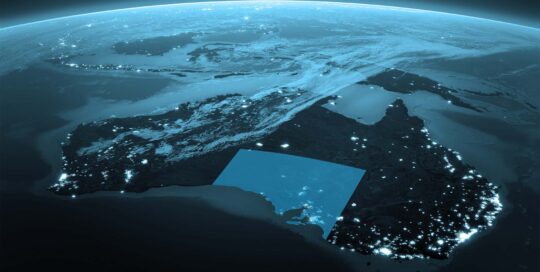Set to accelerate the state’s space economy and create jobs – a $6.5 million, ground-breaking South Australian space mission has today been announced by Premier Steven Marshall.
The Marshall Government will be partnering with the South Australian space industry to send a locally manufactured small satellite to low Earth orbit – the first State Government to ever embark on such a mission.
The information gathered by the satellite will boost South Australia’s space economy, as well as helping to improve state services such as, emergency services, the environment, water quality monitoring, mining and bushfire mitigation.
Importantly, the SASAT1 Space Services Mission will strengthen the competitiveness of South Australian businesses in the small-satellite supply chain and pave the way for external investment and future growth in Australia and abroad.
The SmartSat Cooperative Research Centre (CRC) will lead the mission and application prototyping, with Adelaide-based satellite manufacturing company Inovor Technologies designing and building the satellite and South Australian space company Myriota contracted for the Internet of Things (IoT) space services.
South Australian Premier Steven Marshall said the ground-breaking SASAT1 Space Services Mission delivers on key objectives outlined in the ten-year South Australia Growth State: Space Sector Strategy, released in November.
“South Australia is embarking on a bold mission with industry to design and build a satellite to deliver space-derived services to the state – a venture never undertaken before by any State Government around the country,” Premier Marshall said.
“Not only will the satellite help us make better decisions for state services, it comprehensively cements South Australia as the space state.
“To be announcing that we will embark on a flagship space mission in early 2021 to deliver progressive space-derived services to South Australia is astounding and demonstrates why our state is the national leader in space innovation.”
“The SASAT1 Space Services Mission will deliver significant value to our state and to our local space industry as well as paving the way for growth in space-craft export, IoT sensor exports, Department of Defence and Australian Government space and defence-related projects and the South Australian supply chain,” Premier Marshall said.
“The satellite will also allow South Australian school students to view firsthand the vital information we gain from satellites right here in their own backyard. This is just one step in getting our next generation excited about what a career in space could mean for them.”
“Applications include using the data and imagery we collect to solve real life problems, like helping farmers monitor water levels so they can more accurately predict future yields.”
The SASAT1 Space Services Mission will commence in early 2021 to deliver the satellite in 15 months for launch into orbit. The satellite will be available for a further three years to 2024 for data collection and operations under current funding.
SmartSat CRC Chief Executive Professor Andy Koronios said the mission is evidence that the South Australian Government is working hard to build the local small satellite manufacturing supply chain and strengthen its competitiveness to transform the state into a Hi-Tech economy.
“This mission will provide opportunities for small start-up companies to use the ongoing data captured by the satellite to develop analytics applications for government and commercial use,” said Professor Koronios.
“The SASAT1 Space Services Mission positions South Australia to play an even greater role in national initiatives like water quality monitoring and bushfire mitigation.
“SmartSat is incredibly excited to be providing leadership for this South Australian Government initiative and we are committed to providing expertise and R&D capability to make the mission a great success.”
Minister for Trade and Investment, Stephen Patterson said the SASAT1 mission cements South Australia’s position as the centrepiece of the nation’s space endeavours.
“Building on South Australia’s strong starting position in the NewSpace economy, the state is presently targeting an annual growth rate in the space sector of 5.8% over the next ten years, with expectations that the SASAT1 mission will accelerate that,” Minister Patterson said.
“The SASAT1 Space Services Mission is funded through the South Australian Government’s Economic and Business Growth Fund and we are so pleased to partner with the local space industry on a project that will drive growth, foster innovation and make us competitive on the world stage.”





